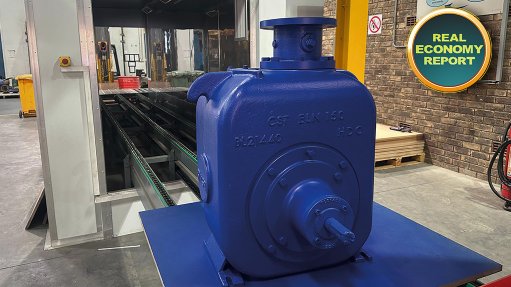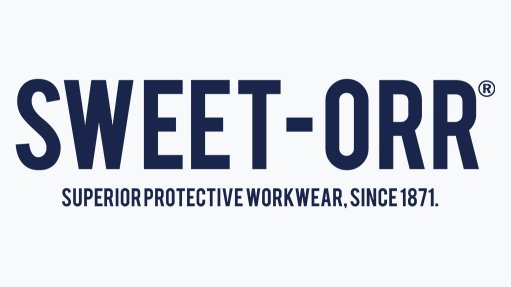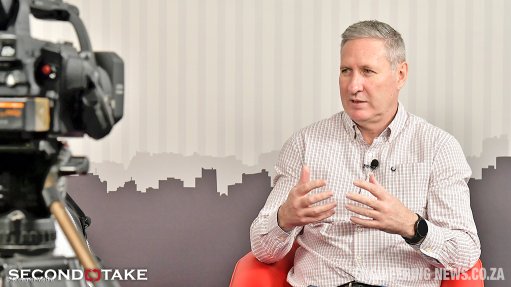Opinion: Tech can make sustainability reporting for South African consumer goods companies what it needs to be
In this article, management consultant Coenraad Bezuidenhout writes that digital sustainability measuring and reporting technologies can help South African consumer goods companies achieve credible, effective and efficient sustainability reporting.
South Africa’s consumer goods companies have been doing the right thing on sustainability – or at least trying to. Ninety-six percent of the JSE’s top 100 firms issue sustainability reports. Eighty-three percent of CEOs are incentivised on environmental, social and governance (ESG) performance. From fresh produce and fast-moving consumer goods to packaging and retail, the sector is visibly aligned with global calls for corporate transparency.
But behind the scenes, reporting remains patchy, costly and often ineffective.
Too much of the sector’s sustainability work still runs on scattered spreadsheets, manual logs, WhatsApp photos and anecdotal updates. Firms cobble together reports from incompatible systems, siloed Excel sheets, supplier emails and dusty farm diaries. The effort required is immense and the confidence it inspires increasingly fragile.
It doesn’t have to be this way.
A wave of digital sustainability measuring and reporting technologies – or DSMARTs – is transforming how businesses globally track, verify and improve their sustainability performance. South Africa’s consumer goods sector is overdue for this transition. If properly leveraged, DSMARTs can make sustainability impact reporting faster, cheaper, more credible and more strategic – not just a compliance burden, but a business advantage.
Research conducted in the first half of this year among sustainability professionals across the sector – from big brand manufacturers and national retailers to technology vendors and consultants – was revealing. Their message was clear: the tools to improve sustainability reporting exist, but most firms are not using them properly, or at all.
One sustainability executive at a mid-sized company admitted: “We’re still building our carbon footprint calculations in spreadsheets. It takes weeks. And then we have to start over when a client wants it in a different format.”
Another shared: “At our farm-level sites, it’s still handwritten logs. No sensors. No automation. Just staff walking around with notebooks.”
These firms are not laggards. They are simply stretched. Skills are short. Budgets are tight. The regulatory environment is shifting fast. And the available technology often feels either too basic — or far too complex and expensive.
But the landscape is changing.
Pressure is mounting from all sides. The EU’s Corporate Sustainability Reporting Directive and Corporate Sustainability Due Diligence Directive will affect thousands of South African exporters directly or indirectly from 2025. South African companies must demonstrate not just ESG intent, but auditable, data-backed outcomes. European investors — responsible for more than 75% of South Africa’s foreign direct investment — will have to prove their portfolios meet new traceability and impact standards.
And that’s just one angle. Domestic consumers are more informed than ever. Some already look out for QR codes, rather than merely trusting generic green slogans. They want to know where products come from, how workers are treated, how much water was used and what was done to reduce harm. Meanwhile, major retailers increasingly require their suppliers to provide environmental and social data that’s credible, comparable and machine-readable.
Firms that rely on narrative-heavy disclosures and manually reconciled reports won’t be able to keep up.
But the upside is enormous for those who get this right.
The companies in our study that had made meaningful DSMART investments reported significant time and cost savings. One food producer used a Power BI dashboard linked to real-time energy meters to reduce electricity costs and cut report preparation time by 60%. A major retailer ran greenhouse-gas tracking across all its distribution centres and retail sites, enabling it to model efficiency scenarios and prepare for the carbon tax’s impact more effectively.
Another manufacturer mapped its supply chain using traceability software, ensuring it was awarded a European contract that had previously been put on hold due to data gaps.
These are not “soft” gains. They are tangible outcomes, from lower audit costs to reduced waste and improved supplier relationships.
So, what’s holding others back?
First, firms often don’t know where to start. The DSMARTs ecosystem includes everything from basic sensors and dashboards to AI, blockchain, and digital twins. But many organisations skip the basics and try to jump into flashy solutions. The result? Frustration, wasted spend, and tools that don’t fit the business need.
Second, DSMART implementation is often treated as a sustainability team project. In reality it is a whole-business shift. Finance, IT, procurement and operations all need to be at the table. Without cross-functional governance and executive backing, these technologies rarely gain traction.
Third, many firms still think in compliance terms: “Let’s tick the boxes and move on.” But DSMARTs offer more than audit-readiness. They offer decision-useful insight. They tell you where you’re wasting energy. Where your risks lie. Where you could reduce emissions — or where a supplier’s non-compliance might damage your brand or block export.
The message to leadership? This isn’t about ‘being nice.’ It’s about being ready and about competitiveness.
So how can companies move forward? No firm is too big or too small or too early in the process on their sustainability journey.
Start with high-impact pilots. Install meters at your highest consumption sites, replace manual data collection with automated solutions, and multiple spreadsheets with dashboards tracking key metrics. The effort and costs saved over time and the rewards from the ability to make quicker, more informed decisions is a lesson that no business should have to wait to learn. One executive in our study said: “Every small win is a big win. Once proof-of-concept is in place, the barriers fall away.”
If you are further in your journey, invest more in integration. Pull data from supervisory control and data acquisition, enterprise resource planning, supplier portals and operations into a unified system – even if it’s still evolving. Standardise units. Automate validation checks. Remove the grunt work.
Upskill your teams. Don’t assume everyone will understand ESG tech by osmosis. Provide training in DSMART platforms, change management, and data literacy. Build internal champions.
And most importantly, plan for where you’re going. Map your DSMART roadmap. Yes, start with compliance and efficiency. But aim for predictive analytics. Real-time dashboards. Supplier-facing blockchain systems. Digital twins that simulate sustainability interventions before you spend a cent.
The future is not just about reporting past performance, it is about improving your performance and simulating future impact.
Already, leading global firms are linking DSMARTs to capital access. Lenders are starting to demand verified ESG data. Procurement teams want traceability built in. Regulators will soon expect real-time, digitised reporting. Firms that delay risk not just inefficiency, but exclusion.
And we cannot afford exclusion. South Africa’s consumer goods sector accounts for 34% of GDP and supports millions of livelihoods. From agriculture to logistics to retail, the sector’s sustainability performance matters – not just to investors and buyers abroad, but to water systems, power grids, and local communities here at home.
Technology alone will not solve these challenges. But ignoring it will certainly guarantee we will not.
It is time to stop treating sustainability reporting as an administrative chore. It is a strategic lever. A competitive differentiator. A foundation for trust in the products we make, the claims we issue, and the futures we promise.
For South Africa’s consumer goods companies, DSMARTs are not a luxury. They’re a necessity. And the sooner these technologies are adopted meaningfully, the more likely we are to thrive in a world where impact is measured, monitored and expected.
Article Enquiry
Email Article
Save Article
Feedback
To advertise email advertising@creamermedia.co.za or click here
Comments
Press Office
Announcements
What's On
Subscribe to improve your user experience...
Option 1 (equivalent of R125 a month):
Receive a weekly copy of Creamer Media's Engineering News & Mining Weekly magazine
(print copy for those in South Africa and e-magazine for those outside of South Africa)
Receive daily email newsletters
Access to full search results
Access archive of magazine back copies
Access to Projects in Progress
Access to ONE Research Report of your choice in PDF format
Option 2 (equivalent of R375 a month):
All benefits from Option 1
PLUS
Access to Creamer Media's Research Channel Africa for ALL Research Reports, in PDF format, on various industrial and mining sectors
including Electricity; Water; Energy Transition; Hydrogen; Roads, Rail and Ports; Coal; Gold; Platinum; Battery Metals; etc.
Already a subscriber?
Forgotten your password?
Receive weekly copy of Creamer Media's Engineering News & Mining Weekly magazine (print copy for those in South Africa and e-magazine for those outside of South Africa)
➕
Recieve daily email newsletters
➕
Access to full search results
➕
Access archive of magazine back copies
➕
Access to Projects in Progress
➕
Access to ONE Research Report of your choice in PDF format
RESEARCH CHANNEL AFRICA
R4500 (equivalent of R375 a month)
SUBSCRIBEAll benefits from Option 1
➕
Access to Creamer Media's Research Channel Africa for ALL Research Reports on various industrial and mining sectors, in PDF format, including on:
Electricity
➕
Water
➕
Energy Transition
➕
Hydrogen
➕
Roads, Rail and Ports
➕
Coal
➕
Gold
➕
Platinum
➕
Battery Metals
➕
etc.
Receive all benefits from Option 1 or Option 2 delivered to numerous people at your company
➕
Multiple User names and Passwords for simultaneous log-ins
➕
Intranet integration access to all in your organisation




















